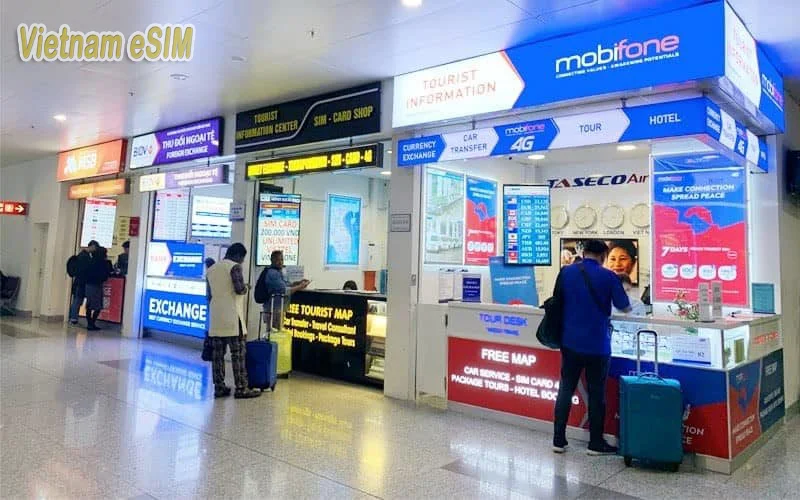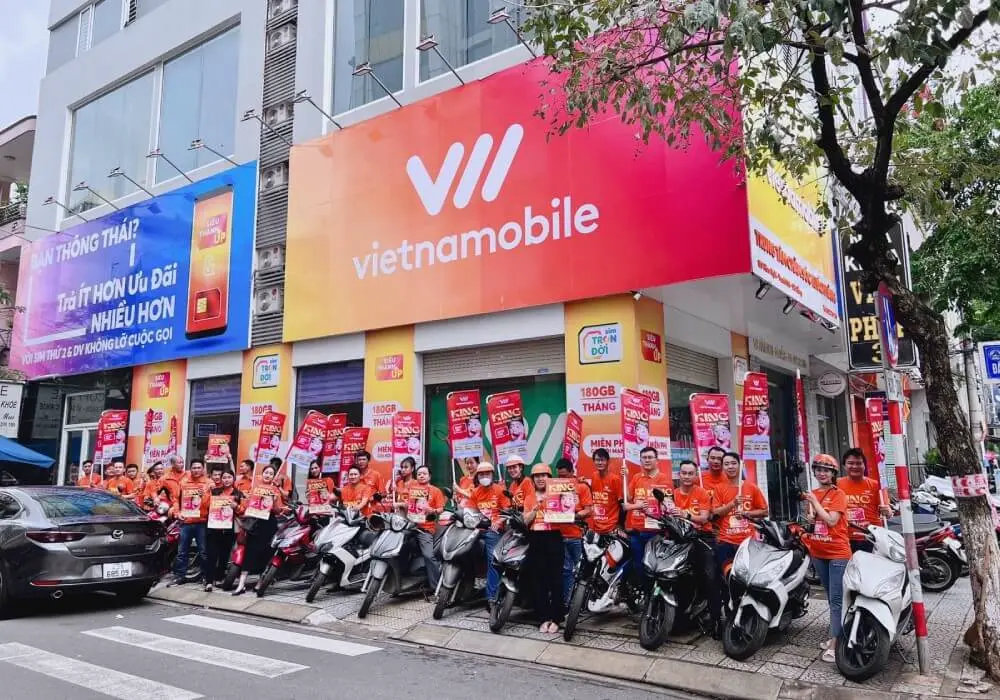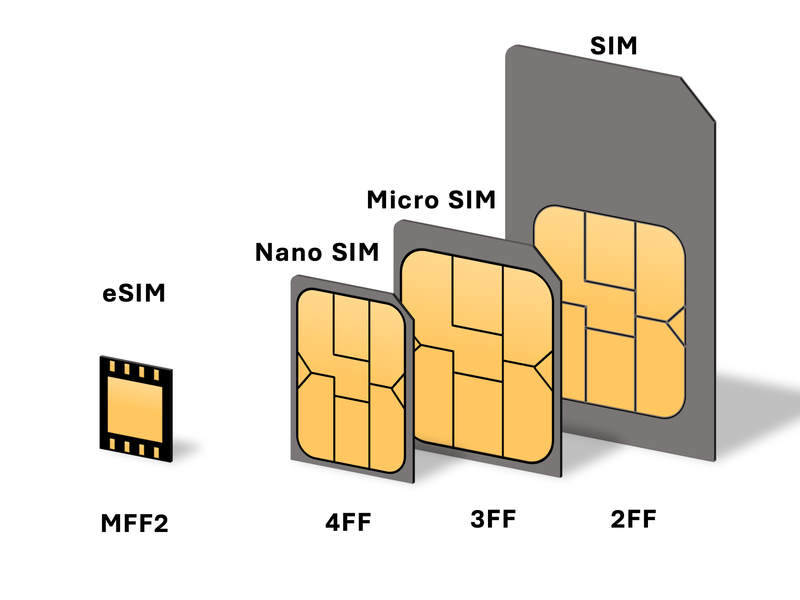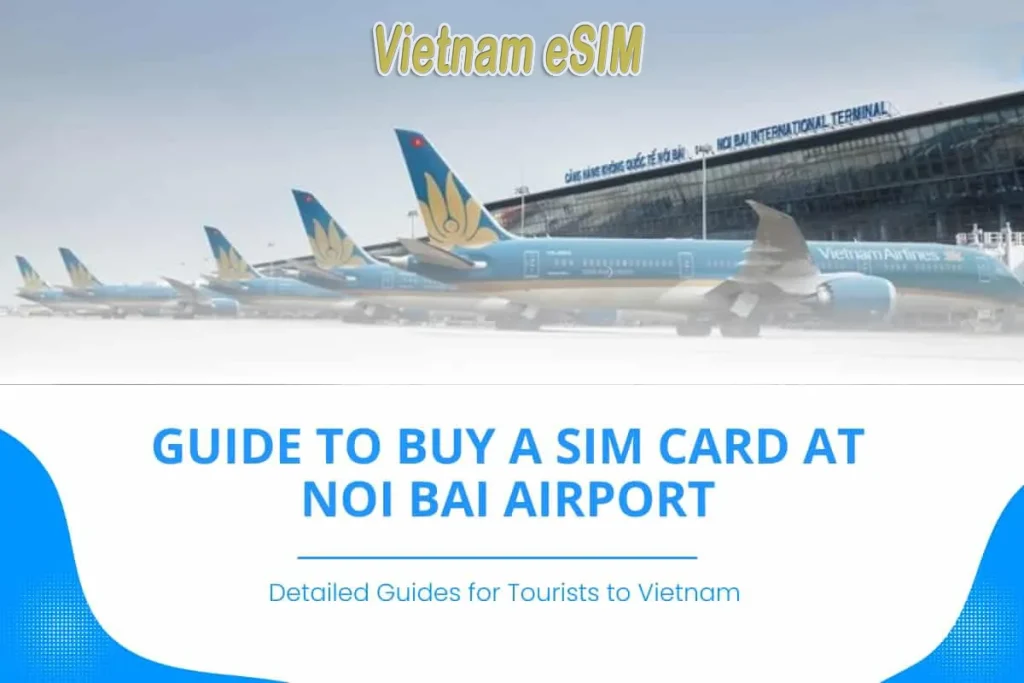eSIM News
Hanoi Airport SIM Card: The Complete Guide for Tourists
Staying connected while traveling in Vietnam is essential for maps, transport apps, and keeping in touch. If you’re arriving at Noi Bai International Airport in Hanoi, one of the first questions is: Should I buy a SIM card at Hanoi Airport?
This guide explains where to buy, the pros and cons, alternative options, and tips to make sure you get the best deal.
Where to Buy a SIM Card at Hanoi Airport
Noi Bai International Airport has made it remarkably easy for travelers to get connected immediately upon arrival. Once you clear customs and enter the arrival hall, you’ll find several SIM card kiosks strategically positioned near the exit doors. These bright, well-marked stalls are hard to miss and are typically the first commercial services you’ll encounter.
The airport hosts official retailers for all three major Vietnamese network providers. Viettel, the country’s largest carrier with the most extensive rural coverage, operates multiple kiosks throughout the terminal. Vinaphone and MobiFone also maintain dedicated counters, though they’re sometimes consolidated into multi-provider stalls managed by licensed resellers.
After immigration and customs at Noi Bai Airport (HAN), you’ll see SIM card stores in the arrivals area. The main telecom providers are:
- Viettel – widest coverage across Vietnam
- Vinaphone – good data speed in cities
- MobiFone – reliable option for tourists
Most SIM card vendors operate from early morning until late evening, typically from 6:00 AM to 10:00 PM, though hours may extend during peak travel seasons. The staff at these kiosks are generally well-trained in basic English and are accustomed to helping international tourists. They can assist with SIM card installation, initial setup, and basic troubleshooting—a valuable service when you’re tired from travel and unfamiliar with Vietnamese telecommunications systems.
The kiosks accept both cash (Vietnamese dong and major foreign currencies) and credit cards, making payment convenient regardless of your preparation level. However, I always recommend having some local currency on hand, as cash transactions often proceed more smoothly.

Advantages of Buying at the Hanoi’s Noi Bai Airport
- Instant internet access – Use Google Maps, Grab, or WhatsApp right after landing.
- Convenience – No need to search for stores in the city. Everything is set up at the airport.
- Tourist SIM packages – Ready-made bundles (7–30 days) with large data allowances.
- Multiple payment options – Cash (VND) and credit cards are accepted.
The primary advantage of purchasing your SIM card at Noi Bai Airport is immediate connectivity. Within minutes of landing, you can have working internet access, allowing you to use ride-hailing apps, access maps, and communicate with hotels or tour operators without delay. This immediacy is particularly valuable if you’re arriving late at night or need to coordinate transportation to your accommodation.
The convenience factor cannot be overstated. Airport staff are experienced in serving international customers and can handle the entire setup process for you. They’ll insert the SIM card, configure your phone’s network settings, and test the connection before you leave the counter. This hands-on service eliminates the technical uncertainties that might intimidate less tech-savvy travelers.
Tourist packages available at the airport are specifically designed for short-term visitors. These plans typically include generous data allowances (ranging from 3GB to unlimited daily usage), reasonable amounts of domestic calling minutes, and sometimes international calling credits. The packages are usually valid for periods matching common tourist stays—7, 15, or 30 days—eliminating the need to worry about top-ups or renewals during your visit.
The airport environment also provides a level of consumer protection that street vendors might not offer. Official kiosks are regulated, staffed by trained personnel, and accountable to airport authorities. If you encounter issues with your SIM card, you can return to the same location with confidence that your problem will be addressed professionally.
Disadvantages of Buying at the Noi Bai Airport
Despite these conveniences, airport SIM card purchases come with notable drawbacks, the most significant being cost. Airport retailers typically charge 30-40% more than you’d pay at official stores in downtown Hanoi. A tourist SIM package that costs 200,000 VND (approximately $8) in the city might cost 300,000 VND ($12) at the airport. For budget-conscious travelers, this markup represents a meaningful expense that could be better spent on street food or additional attractions.
The selection of available plans is also more limited at airport kiosks. While downtown stores offer dozens of different packages optimized for various usage patterns and budgets, airport vendors typically stock only the most popular tourist packages. If you have specific needs—such as extensive international calling, longer validity periods, or minimal data requirements—you might not find suitable options at the airport.
During peak travel times, particularly during Vietnamese holidays or high tourist season, queues at SIM card kiosks can be frustratingly long. I’ve seen travelers wait 30-45 minutes just to purchase and activate a SIM card, time that could be better spent beginning their Vietnamese adventure.
Perhaps most concerning are the occasional issues with SIM card quality and activation. While reputable vendors are generally reliable, some travelers have reported receiving inactive SIM cards, packages that expire much sooner than advertised, or cards that don’t work properly outside Hanoi. These problems are rare but can cause significant inconvenience, especially if you discover them after leaving the airport.
- Higher prices – Expect to pay 30–40% more than in Hanoi city. Example:
- City price: VND 150,000 (~US $6)
- Airport price: VND 250,000–350,000 (~US $10–15)
- Limited plan choices – Airport counters offer only a few tourist SIM options.
- Possible waiting time – Long queues during busy flight arrivals.
- Activation issues – Some travelers report SIMs expiring early or not working properly. Always test before leaving.
| comparison | Advantage | Disadvantage |
|---|---|---|
| Immediate Connectivity | Yes upon arrival | |
| Convenience | Located in arrival hall, English-speaking staff | |
| Tourist-Friendly Plans | Pre-set packages available | |
| Payment Options | Credit cards accepted | |
| Cost | Higher than city stores | |
| Plan Variety | Limited options | |
| Waiting Time | Possible long queues at busy times | |
| Risk of Scam | Potential fraudulent activation or early expiration |
Alternatives to Hanoi Airport SIM Cards
1. Buy a SIM Card in Hanoi City Center
If you can manage without immediate connectivity, purchasing your SIM card in downtown Hanoi offers significant advantages. Official Viettel, Vinaphone, and MobiFone stores are scattered throughout the city, particularly concentrated around Hoan Kiem Lake and the Old Quarter. These stores offer the full range of available plans, competitive pricing, and knowledgeable staff who can help you choose the perfect package for your specific needs.
The cost savings are substantial—you’ll typically pay local prices rather than tourist-inflated rates. Additionally, city stores often run promotions and special offers that aren’t available at the airport. Many hotels and guesthouses can provide directions to the nearest official store, and some even offer to accompany guests to ensure a smooth purchase experience.
- Cheaper than the airport
- More plan options at official Viettel, Vinaphone, or MobiFone stores
- Recommended if you don’t need internet immediately

2. Get an eSIM for Vietnam (Best Option)
For travelers with compatible smartphones, eSIMs represent an increasingly attractive alternative. Several international providers offer Vietnam-specific eSIM packages that can be purchased and activated entirely online before you travel. Once activated, these digital SIMs provide immediate connectivity upon landing without requiring you to visit any physical store or kiosk.
eSIMs offer unique advantages for modern travelers. They allow you to maintain your home country number while simultaneously using a Vietnamese data plan, perfect for staying connected with family while enjoying local rates for internet access. The activation process is entirely digital—you simply scan a QR code or enter activation details provided by the eSIM provider.
Major eSIM providers like Airalo, Nomad, and others offer Vietnam packages ranging from short-term tourist plans to longer-term options for extended stays. While prices are generally comparable to airport SIM cards, the convenience and flexibility often justify the cost for travelers who value seamless connectivity.
- Purchase online before your trip
- Receive a QR code by email → scan → activate instantly
- Keep your home SIM active with dual SIM
- No waiting in line or overpaying at the airport
- Works with most modern phones (check compatibility)

3. Use International Roaming
Your home carrier’s international roaming service remains an option, though it’s typically the most expensive choice. However, for very short trips or travelers who need to maintain constant access to their home phone number, roaming might make financial sense. Many carriers now offer daily or weekly international packages that can be more cost-effective than purchasing local SIMs for brief visits.
- Very convenient but usually the most expensive option
- Good for short business trips if cost is not an issue
Tips for Tourists Buying a Vietnam SIM
- Bring your passport – required for SIM registration.
- Check if your phone is unlocked – foreign SIMs won’t work on locked devices.
- Test before leaving – open a browser or map app to confirm your SIM works.
- Compare price between sim card stores – prices and packages may vary slightly by provider.
Before making any SIM card purchase, invest a few minutes in comparing available plans. Airport vendors usually display rate cards, but don’t hesitate to ask questions about data speeds, coverage areas, and exactly what’s included in each package. Understanding the terms can prevent unpleasant surprises later in your trip.
Always insist that the vendor fully activate your SIM card and test its functionality before you leave the counter. Make a test call, send a text message, and verify that mobile data is working properly. This simple step can save hours of frustration later if there are activation issues.
Bring your passport—Vietnamese regulations require SIM card registration, and vendors need to see identification before completing the sale. Keep your passport easily accessible to streamline the purchase process.
If you’re considering an eSIM, verify your phone’s compatibility before traveling. While most modern smartphones support eSIM technology, older models and some budget devices do not. Check your device specifications or contact your phone manufacturer to confirm compatibility.
Consider your actual usage patterns when choosing a plan. Many tourists overestimate their data needs and pay for packages with more capacity than they’ll ever use. If you’ll primarily be using WiFi at hotels and restaurants, a smaller data package might be perfectly adequate and significantly cheaper.
Finally: Should You Buy a SIM at Hanoi Airport?
After helping countless travelers navigate Vietnam’s connectivity options, I’ve learned that there’s no universally “best” choice—only the best choice for your specific circumstances and priorities.
Airport SIM cards excel in convenience and immediate availability. If you’re arriving in Hanoi without a concrete plan, need internet access immediately, or simply want the peace of mind that comes with instant connectivity, the airport premium might be worthwhile. The professional setup service and English-speaking staff provide valuable support that can be especially helpful for first-time visitors to Vietnam.
eSIMs represent the future of travel connectivity, offering unparalleled convenience for tech-savvy travelers with compatible devices. The ability to activate service before departure and maintain dual connectivity makes eSIMs particularly attractive for business travelers or those who need to stay constantly reachable on their home numbers.
City purchases remain the champion for budget-conscious travelers and those who don’t need immediate connectivity. If you can survive your first few hours in Hanoi using hotel WiFi or can navigate to your accommodation without mobile internet, the cost savings and expanded plan options available in the city make this approach very attractive.
Regardless of which option you choose, staying connected in Vietnam will enhance your travel experience immeasurably. From accessing real-time translation apps to booking transportation and sharing your adventures with friends and family, reliable mobile connectivity has become an essential travel tool.
Vietnam’s telecommunications infrastructure is excellent, the people are helpful, and the country is incredibly welcoming to international visitors. With proper planning and the right connectivity solution for your needs, you’ll be perfectly positioned to explore all the wonders that Vietnam has to offer. Safe travels, and enjoy your Vietnamese adventure!

